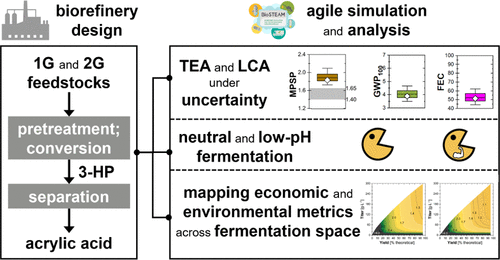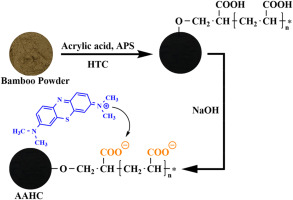What is acrylic acid used for? Is acrylic acid safe?
Release time: May 6, 2025
Have you ever wondered what makes your favorite paints so durable, your adhesives so strong, or even some medical products so effective? The answer might lie in a versatile chemical called acrylic acid. But with its widespread use, questions about its safety naturally arise. Let’s dive into the science behind acrylic acid, its applications, and whether it poses any risks.
What Is Acrylic Acid?
Acrylic acid, CAS No. 79-10-7, is a colorless liquid with a sharp, pungent odor. It’s a key industrial chemical used primarily to produce acrylic polymers, which are the building blocks of many everyday products. These polymers are valued for their durability, clarity, and resistance to heat and UV light.

What Is Acrylic Acid Used For?
Acrylic acid’s polymers and derivatives are everywhere! Here are some common uses:
-
Plastics and Coatings
-
Acrylic acid is used to make polyacrylates, which are found in paints, varnishes, and coatings for cars, buildings, and even furniture. These coatings are weather-resistant and long-lasting.
-
-
Adhesives and Sealants
-
Ever used super glue or sticky tapes? Many adhesives rely on acrylic-based compounds for their strong bonding properties.
-
-
Textiles and Diapers
-
Superabsorbent polymers (SAPs), made from acrylic acid, are used in diapers and sanitary products because they can soak up liquids many times their weight.
-
-
Medical and Personal Care
-
Acrylic acid derivatives are used in wound dressings, contact lenses, and even some cosmetics.
-
-
Water Treatment

-
It helps produce chemicals that purify wastewater by removing impurities.
-
-
Sustainable Alternatives
-
Scientists are now exploring ways to produce acrylic acid from biomass (like glycerol or plant waste) instead of petroleum, making it more eco-friendly.
-
Is Acrylic Acid Safe?
While acrylic acid is incredibly useful, it’s not something you’d want to handle carelessly. Here’s what science tells us:
Potential Hazards
-
Skin and Eye Irritation: Pure acrylic acid is corrosive and can cause severe burns or allergic reactions upon direct contact.
-
Inhalation Risks: Breathing in its vapors can irritate the lungs and throat.
-
Toxicity in High Doses: Animal studies show that swallowing or inhaling large amounts can harm internal organs.
But Don’t Panic!
-
Finished Products Are Safe: Once acrylic acid is polymerized (turned into plastic or gel), it becomes stable and non-toxic. That’s why diapers and paints don’t pose a risk in daily use.
-
Workplace Safety Matters: Industrial workers handling raw acrylic acid wear protective gear (gloves, masks) to avoid exposure.
-
Regulations Exist: Governments limit how much acrylic acid can be used in consumer products to ensure safety.
Eco-Friendly Innovations
Researchers are developing greener production methods, such as making acrylic acid from plant-based materials like glycerol (a byproduct of biodiesel). This reduces reliance on fossil fuels and lowers environmental impact.
Summary
Acrylic acid is a workhorse of modern industry, making countless products more durable, functional, and efficient. While the raw chemical requires careful handling, the end products we use daily are thoroughly tested and safe.
So next time you pick up a glossy magazine (printed with acrylic-based inks) or change a diaper (thank superabsorbent polymers!), you’ll know the science behind it—and why there’s no need to worry.
Science keeps improving, and so do we!
References: Studies from Catalysis Reviews, Angewandte Chemie, ACS Sustainable Chemistry & Engineering, and Journal of Hazardous Materials.
Is xanthine a bronchodilator? What foods contain xanthine?
Have you ever wondered why your morning coffee perks you up or how chocolate can feel so energizing? The answer lies in a tiny molecule called xanthine, CAS No. 69-89-6. Found in everything from tea leaves to your own body, xanthine is a fascinating compound with roles in metabolism, medicine, and even food freshness. But is it a bronchodilator? And which foods contain it?
What is isophorone used for? Is isophorone toxic?
If you’ve ever wondered about the chemicals behind everyday products—from vibrant paints to life-saving medical imaging—isophorone might surprise you. This versatile organic compound, with its camphor-like smell, plays a hidden but critical role in industries ranging from manufacturing to healthcare. But what exactly is it, and should we be concerned about its safety?
Bpc 157
CAS number:137525-51-0
Ergothioneine
CAS number:497-30-3
Potassium chloride
CAS number:7447-40-7
Isophorone
CAS number:78-59-1
TITANIUM DIOXIDE (TIO2)
CAS number:13463-67-7
Formaldehyde
CAS number:50-00-0
Contact Us
We supply all kinds of reagents and raw materials, focus on research and development, and integrate chemical synthesis, purification technology and small-scale, pilot and mass production supply chain construction.Email:net.fei@163.com
